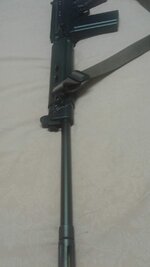- Messages
- 691
- Reactions
- 2,067
When I'm dremel'ing metal with carbide cutting bits, I try to get the speed right so the material doesn't heat up too much and stick in the flutes. It still happens some no matter what, though. Keep a small jeweller's screwdriver on hand to periodically scrape the flutes out, and you'll find the going much smoother and the bits last a lot longer. It's much easier to clean than you'd expect the first time.
If you dip your cutter in kerosene when cutting/milling aluminum it will keep the flutes clear. I have been using it for 30 years. Tip was shared by an old machinist that was teaching me all those years ago. I keep an old soup can with a magnet in the bottom half full of kero near my mill. I use an acid brush to keep my tooling coated with the kerosene.













